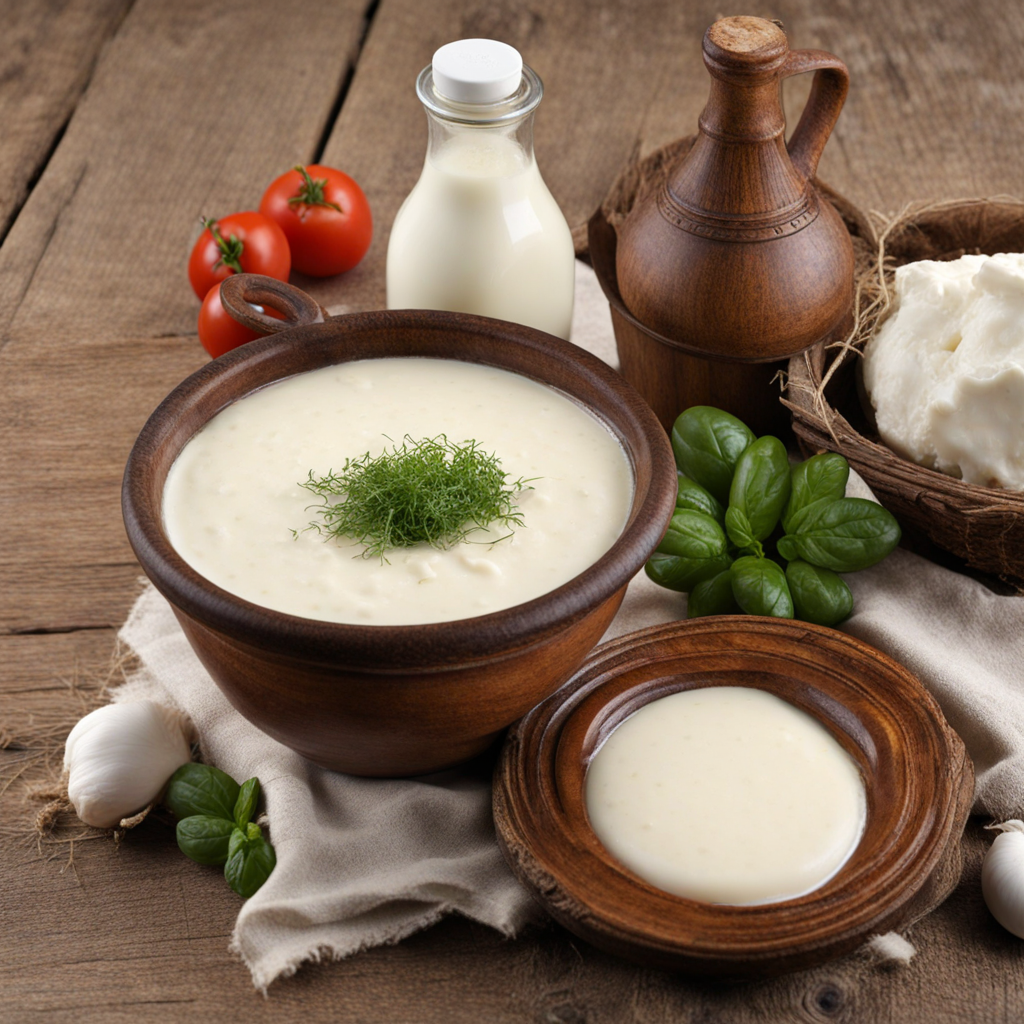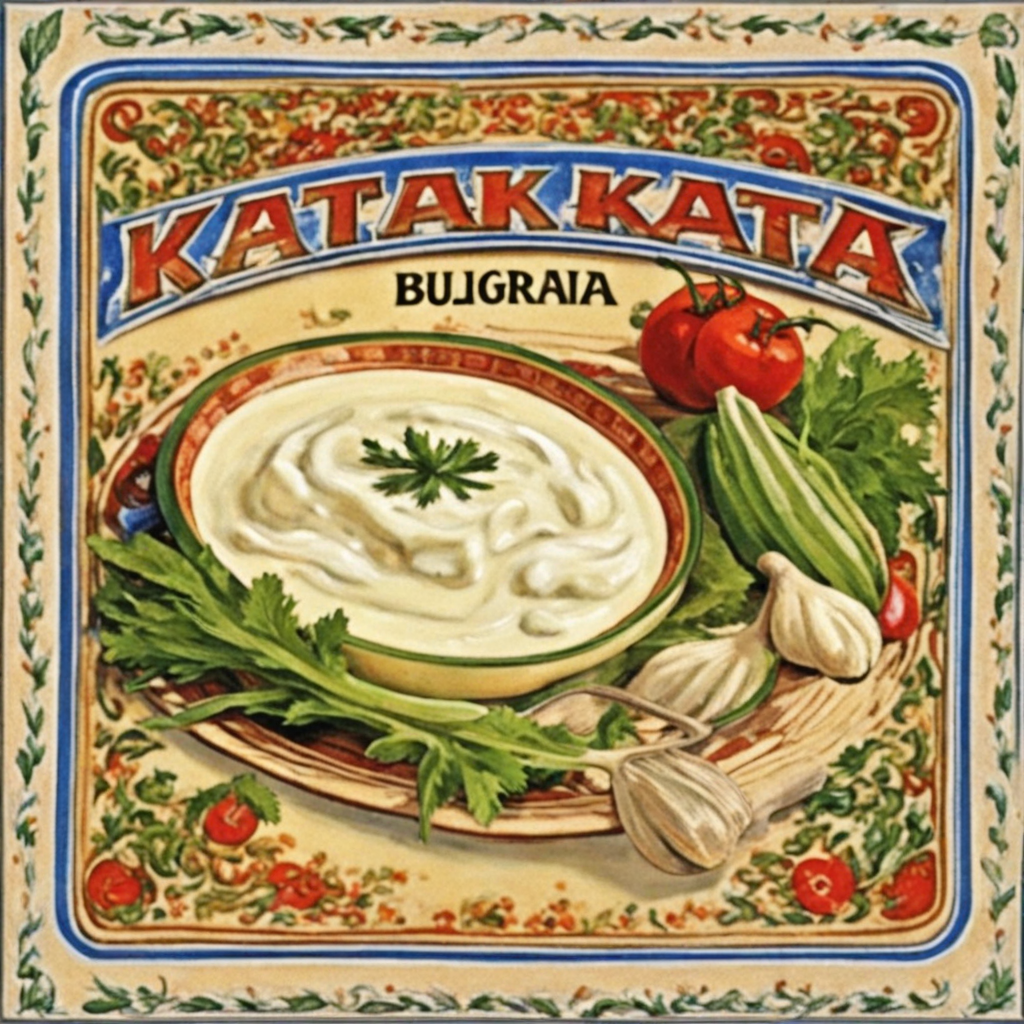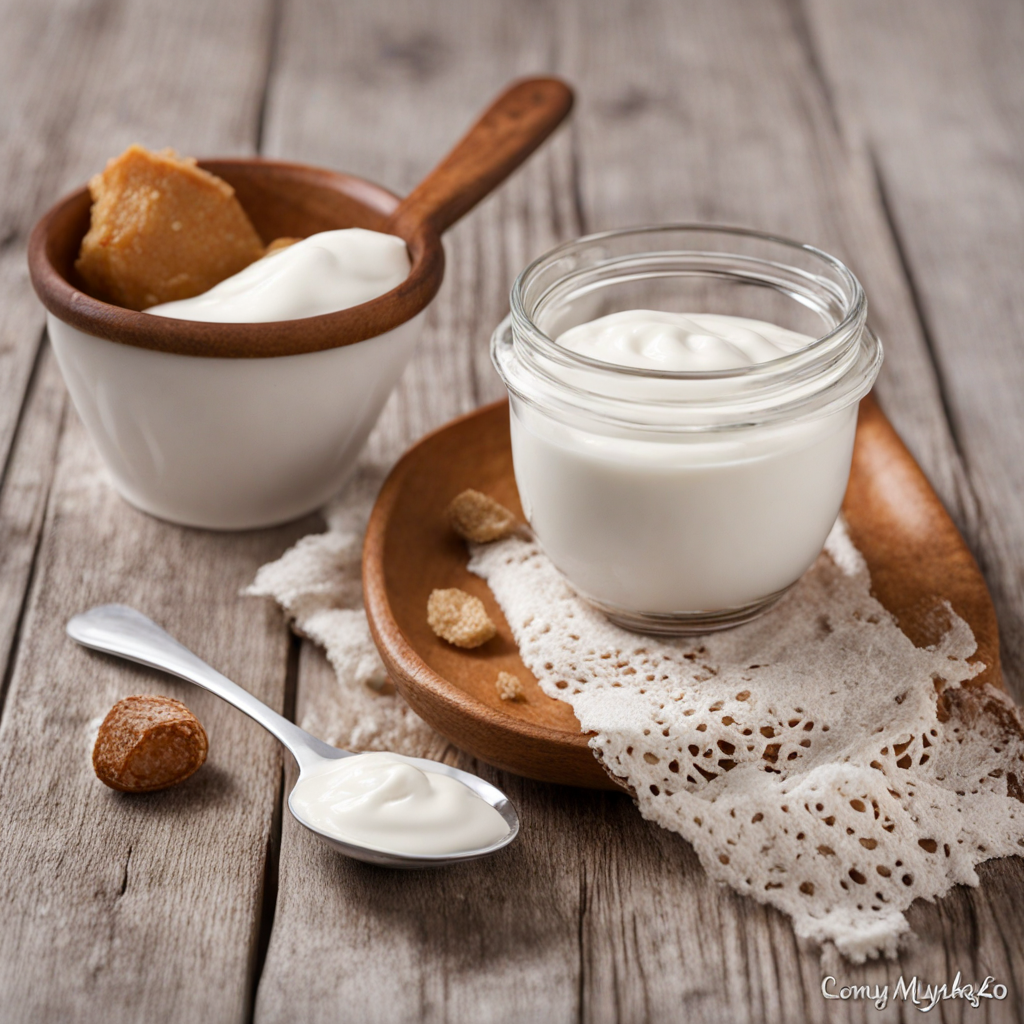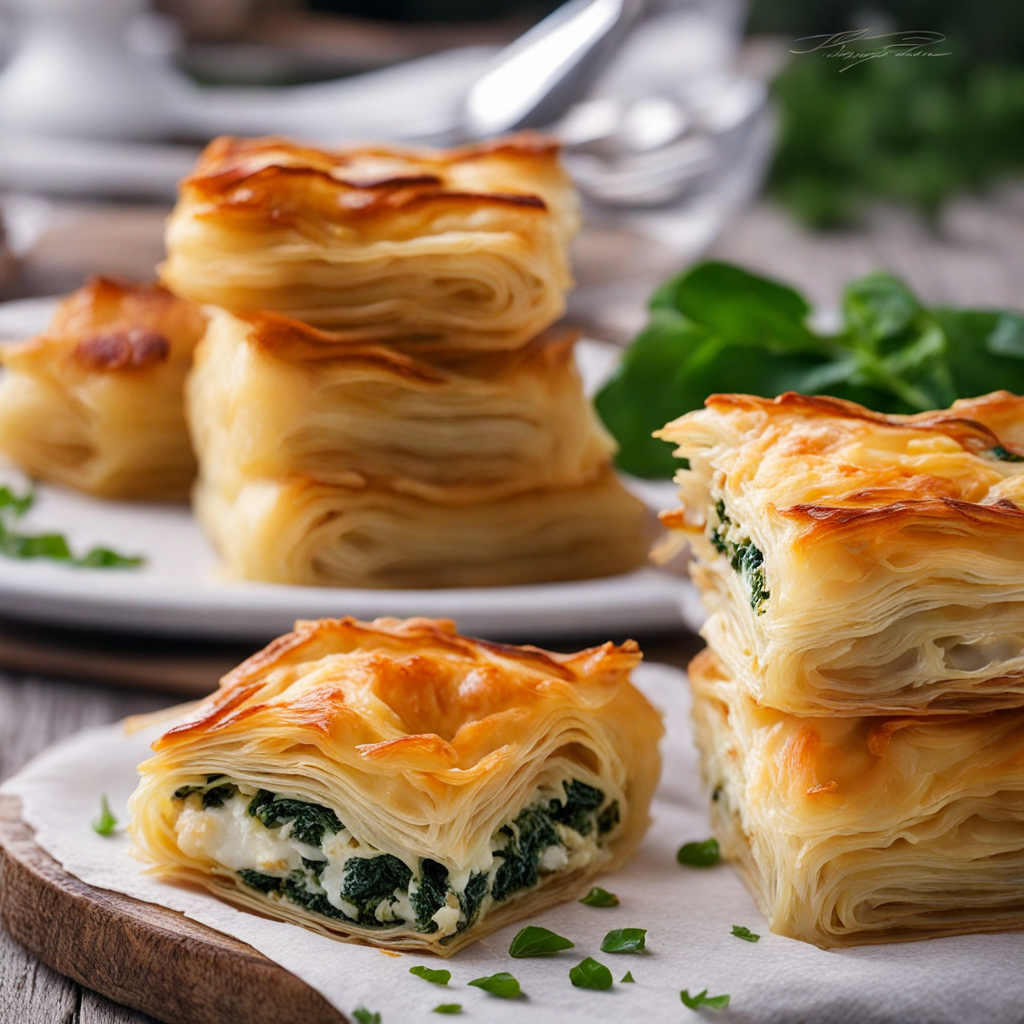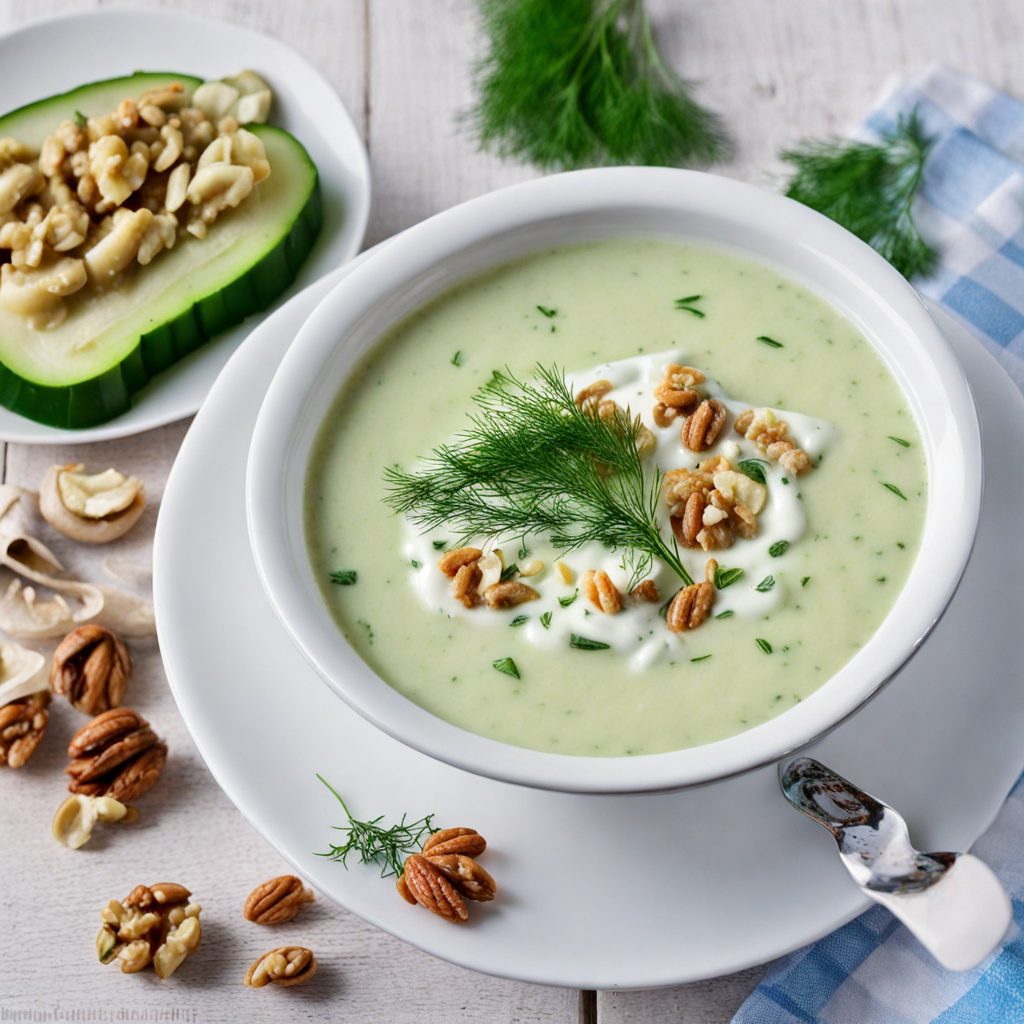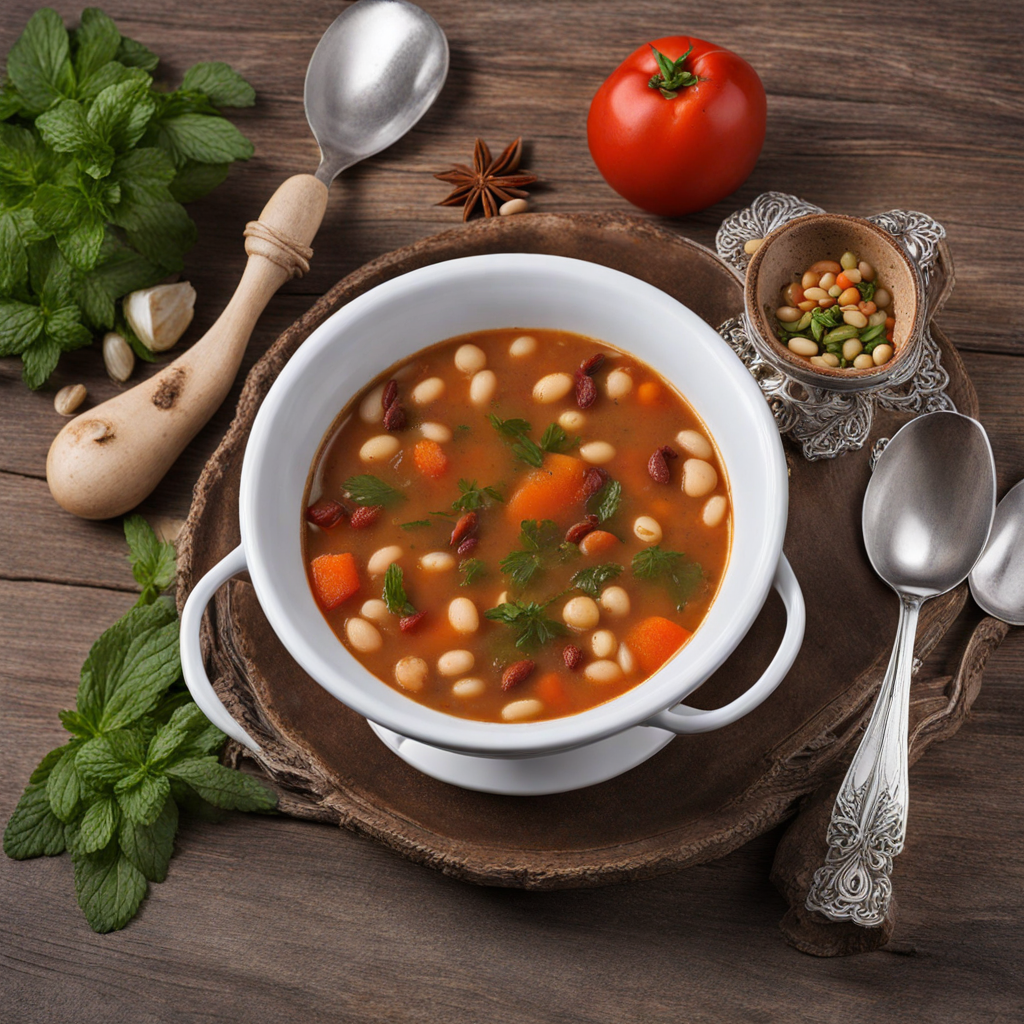Katak
Katak is a delightful Bulgarian dish that showcases the country's rich culinary heritage. This savory specialty is primarily made from a combination of fresh cheese, typically feta or a similar crumbly cheese, mixed with eggs and a touch of yogurt. The ingredients are blended together to create a creamy, tangy filling that is then enveloped in layers of thin pastry, similar to phyllo dough. The result is a crispy exterior that contrasts beautifully with the soft, flavorful interior, making each bite a harmonious experience of textures and tastes. What sets Katak apart is its unique seasoning, often including herbs such as dill or parsley, which add an aromatic freshness to the dish. Some variations may incorporate spinach or other greens, enhancing the nutritional profile while also adding depth to the flavor. Once assembled, the dish is baked until golden brown, allowing the flavors to meld together and creating a tantalizing aroma that fills the air. It's commonly served warm, making it an inviting option for gatherings or a comforting family meal. Katak is not just a dish; it’s a culinary experience that reflects the traditions and agricultural bounty of Bulgaria. It can be enjoyed as a main course or as a side dish, often paired with yogurt or a light salad to balance the richness of the cheese filling. Whether you are discovering Bulgarian cuisine for the first time or revisiting a beloved favorite, Katak promises to delight your palate with its unique blend of flavors and textures, inviting you to savor the essence of this vibrant culture.
How It Became This Dish
The Culinary Journey of Катък: A Bulgarian Tradition Origin and Historical Context Катък (pronounced "katak") is a traditional Bulgarian dairy product that holds a cherished place in the culinary heritage of Bulgaria. Its origins can be traced back to the ancient practices of dairy farming in the Balkan region, where pastoral communities thrived on the milk of sheep, goats, and cows. The name "катък" itself is believed to derive from the Slavic word meaning "to curdle," reflecting its primary method of production. Dairy farming has been an integral part of Bulgarian culture for centuries. Historical records indicate that the Thracians, an ancient civilization that inhabited present-day Bulgaria, were already engaged in the production of cheese and other dairy products as early as 3,000 BCE. The fertile lands and favorable climate of the Balkan Peninsula allowed for diverse pastoral practices, leading to the creation of various dairy products, including yogurt, cheese, and, of course, катък. Production Process Traditionally, катък is made from the milk of sheep or goats, although cow's milk can also be used. The basic process involves curdling the milk through the addition of rennet and allowing it to ferment naturally. Once the curds form, they are drained and pressed to remove excess whey, resulting in a dense, creamy cheese-like substance. The final product is often seasoned with salt and can be flavored with herbs, garlic, or spices, depending on regional variations and personal preferences. The consistency of катък can vary; it can be soft and spreadable or firmer and sliceable. Its rich, tangy flavor profile makes it versatile in both savory and sweet dishes. In many Bulgarian households, катък is prepared in the spring and summer months when fresh milk is abundant, making it a seasonal delicacy. Cultural Significance In Bulgarian culture, катък is not just a food item; it is a symbol of hospitality, tradition, and community. It is often served during family gatherings, celebrations, and festive occasions, embodying the warmth of Bulgarian hospitality. The preparation and sharing of катък often bring families together, fostering a sense of belonging and continuity of culinary heritage. The product also has a strong connection to the agricultural calendar. As a dairy product, катък is linked to the pastoral lifestyle and the rhythms of rural life. It is often consumed during the spring and summer months, coinciding with the period of milking and the abundance of fresh ingredients. This seasonal aspect highlights the importance of local and sustainable food practices in Bulgarian culture. Moreover, катък has found its way into traditional Bulgarian cuisine as a key ingredient in various dishes. It is commonly used in salads, spreads, and pastries, often paired with fresh vegetables, herbs, and breads. The unique tanginess of катък complements many traditional Bulgarian foods, enhancing their flavors and adding a nutritional boost. Evolution Over Time As Bulgaria has evolved through historical events, including Ottoman rule, the Balkan Wars, and the communist era, so too has the production and consumption of катък. During the Ottoman period, Bulgarian dairy practices were influenced by the culinary traditions of the empire, leading to the incorporation of new spices and preparation methods. This era saw the spread of dairy products across cultural boundaries, enriching the Bulgarian culinary landscape. In the 20th century, particularly during the communist regime, there was a shift in food production and availability. State-owned farms and collectivization changed the dynamics of dairy farming, affecting the traditional methods of катък production. However, the resilience of local communities led to the preservation of traditional recipes and methods, ensuring that катък remained a staple in Bulgarian households. The rise of global food trends and the increasing interest in artisanal and traditional foods in the late 20th and early 21st centuries have also influenced the perception and production of катък. As people worldwide began to seek out authentic and locally sourced foods, traditional Bulgarian products like катък gained recognition. Small-scale producers and artisans have revived interest in traditional methods, often emphasizing organic practices and high-quality ingredients. Contemporary Relevance Today, катък is experiencing a renaissance as chefs and home cooks alike rediscover the flavors and textures of this beloved dairy product. It is featured on menus in restaurants that focus on traditional Bulgarian cuisine, as well as in modern interpretations that showcase its versatility. The rise of the farm-to-table movement has also contributed to the renewed appreciation for local products like катък, with many markets and specialty shops highlighting artisanal versions made by local producers. Moreover, the cultural significance of катък is being reinforced through initiatives aimed at preserving Bulgarian culinary heritage. Food festivals, workshops, and community events often highlight traditional foods, allowing younger generations to learn about and connect with their culinary roots. This revival is not just about nostalgia; it represents a broader movement towards sustainability, cultural identity, and the appreciation of traditional methods in the face of globalization. Conclusion The story of катък is a testament to the enduring power of food as a carrier of culture and tradition. From its ancient origins to its contemporary revival, катък embodies the flavors, history, and hospitality of Bulgaria. It serves as a reminder of the importance of local practices, community connections, and the joy of sharing food with loved ones. As we savor the rich, tangy taste of катък, we are not just enjoying a delicious dairy product; we are partaking in a centuries-old tradition that continues to thrive in the heart of Bulgarian culture. Whether spread on bread, incorporated into a savory dish, or enjoyed on its own, катък transcends mere sustenance, offering a glimpse into the rich tapestry of Bulgaria’s culinary heritage and the profound connections between food, history, and identity.
You may like
Discover local flavors from Bulgaria


